The Menswear Bible: Sport Coats
The Genesis of the Gentleman's Wardrobe
History of the Sport Coat
The sport coat as we know it today was born out of function and comfort. The Norfolk jacket is widely regarded as the father of all sport jackets; originating from its namesake region of England in the 1860s. The jacket was made to allow country gentlemen a wider range of movement while on horseback, shooting, or casting fishing lines than they would get from their regular clothing.
The first of their kind featured box pleats at the back for increased movement range and belted waists for affixing hunting and riding gear. These early jackets were also made of much thicker fabrics than a gentleman’s normal clothing. Materials like tweeds and herringbone weaves provided superb warmth and durability in the countryside. Into the 20th century, the idea spread and became a staple of casual menswear, both in the old world and new.
In the late 19th and early 20th centuries, you would’ve heard the term “sack coat” in the US, due to the sport coat’s oversized and casual nature compared to business clothing of the time. The sport coat still was, however, relegated mostly to wealthier men of leisure until after World War II, when Hollywood stars like Cary Grant and Clark Gable brought casual gentlemanly style to the big screen. The masses quickly scrambled to imitate the look, and brought into the everyday casual wardrobe what we would now refer to as the sport coat. While the fabrics, cuts, and ways to wear have evolved over the decades since the 1930s, the sport coat remains immortal in modern men’s fashion as a durable and stylish alternative to the traditional suit, standing on its own as an extremely flexible addition to any man’s wardrobe.
The Anatomy of a Classic: Materials and Fabrics
Fabric is an integral detail when shopping for and choosing the right sport coat. This detail will decide in its entirety how and where you will be wearing it. Classic fabrics like tweed and flannel will never let you down in the colder months, while linen and hopsack can get you through the summer months without sweating profusely. The weight, weave, and origin of the fabric play a key role in which name we give it, and how it will serve you while you wear it.
Twill - When shopping for clothing, it is almost guaranteed you have seen the word ‘twill’ somewhere: from ‘cotton twill’ denim to twill dress shirts and jackets. Twill is not a material but rather a weave. It is usually found in a 2x2 or 2x3 configuration, meaning that 2 warp threads (longitudinal) go into 2 or 3 weft threads (latitudinal). The warp threads are traditionally the original material and the weft threads are woven through them to create the weave. In practicality you end up with a hefty diagonal pattern that is the signature of denim jeans and tweed jackets alike with the pattern being continuous yet directional and intentional. In its original form twill provides a smooth texture that is tight and naturally interlocking making it perfect for workwear. It can be made with heavier and thicker fabrics to achieve warmer and better insulating garments. It also doesn’t wrinkle due to its natural properties (a welcome bonus).
Worsted - The classic style of all suitings and jackets. Classified by their micron measurement such as Super 100 at 18.75 microns to Super 150 at 16.25 microns and even finer. This is the measurement of the width of the wool fiber. The extra fine wool strands create a shiny and smooth feel. That smooth feel is the basis for many parts of the men’s Italian style which dictates smooth lines and cuts that seamlessly blend the lower and upper body. This is perfect for the everyday blazer, from a day in the office to a night out it fits for any occasion.



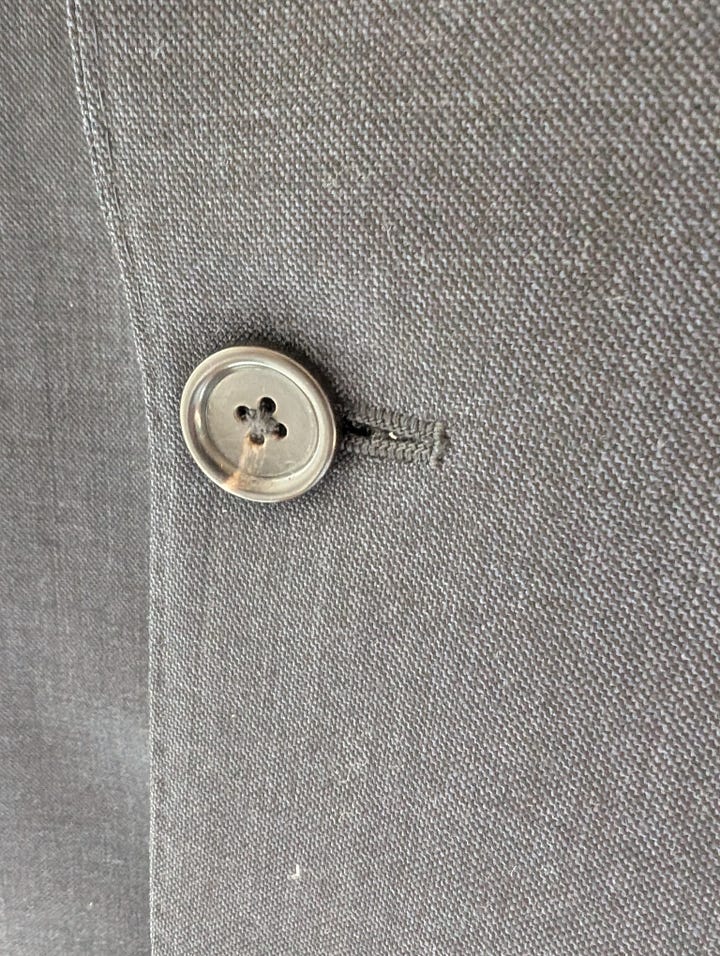
Tweed - The name tweed comes from a Scottish word for twill, because the first tweeds were woven in a twill pattern. However, not all tweeds are twill weaves. Tweed refers to the yarn rather than the actual weave. Tweed can be a plain weave, a twill, or a herringbone. Tweed is a rough and heavy fabric that defined the sporting coat. The original tweed coats came from Scottish and Irish farmers who needed warm and insulating jackets to hunt with. It was the original men’s activewear and considered the outfit of sport come hunting season for many Britons. Eventually it took its heritage across the pond and onto the campus greens of universities across America, forever cementing itself in New England Prep style.
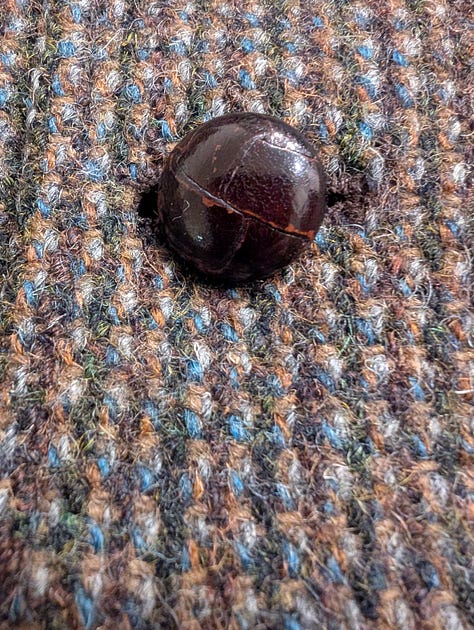
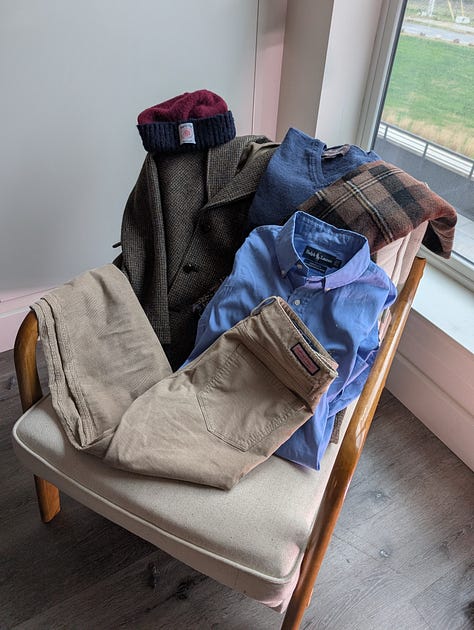
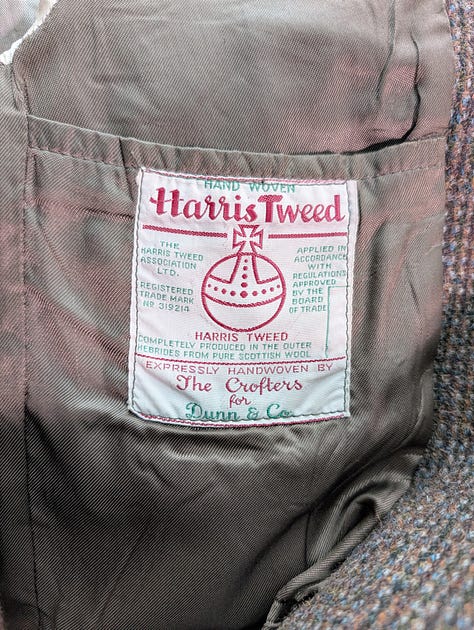
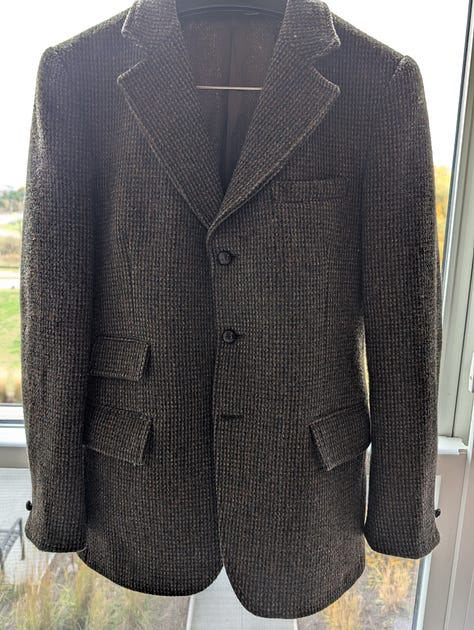
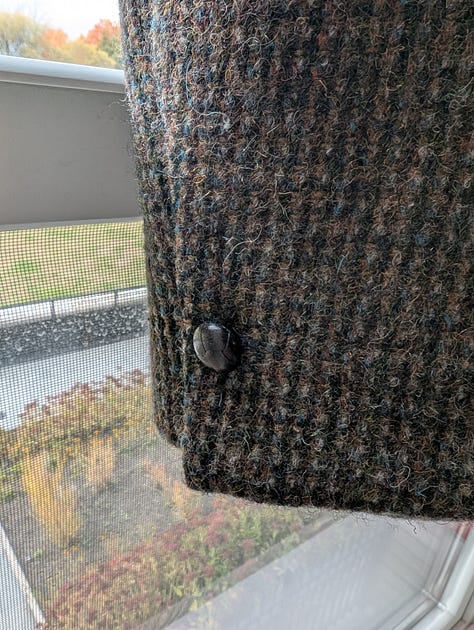
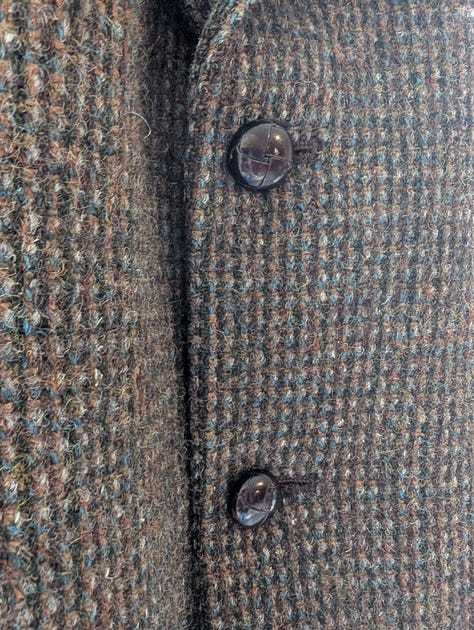


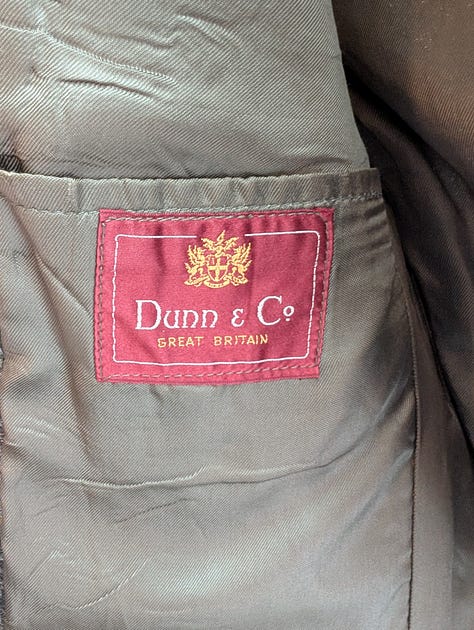
Herringbone - a staggered, interlocking V weave that creates fantastic visual interest. Herringbone is a classic sport coat pattern and an easy way to spice up an otherwise normal fabric. It is commonly used with tweed to create an organized and multileveled surface that is rough and heterogenous. (Shown below)
Flannel - A similarly textured and warm garment to tweed which is less common in the traditional menswear space but no less desirable. The warm and insulating comfort of flannel wool gives a casual yet elegant look to a jacket that can be worn with a casual shirt and denim, or a pair of matching flannel trousers to complete the look. You can’t go wrong with flannel in the winter months, a material that keeps you warm and looking stylish during the colder days.
Hopsack and Basket Weave - The classic material of the historic navy blazer consists of an open weave allowing for flexibility and breathability, keeping you cool throughout the days and seasons. The name comes from the similarity of the weave to a picnic basket or beer grain sacks which are made from a similar pattern. Hopsack and basket weave can include a wide variety of materials including synthetics, cotton, and of course, wool.




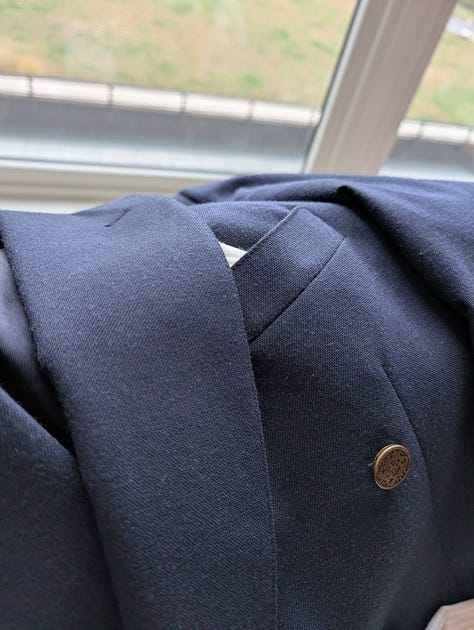
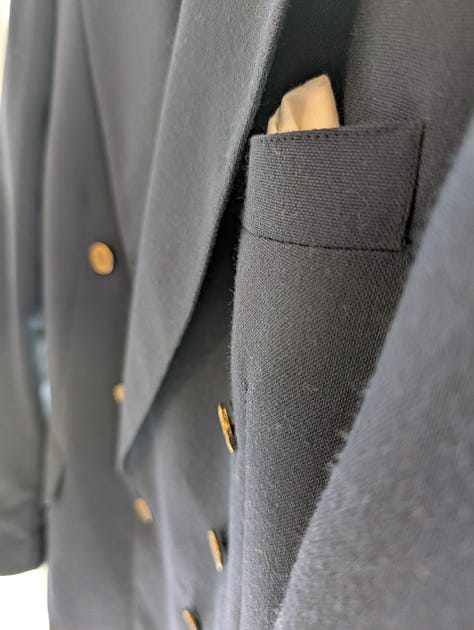

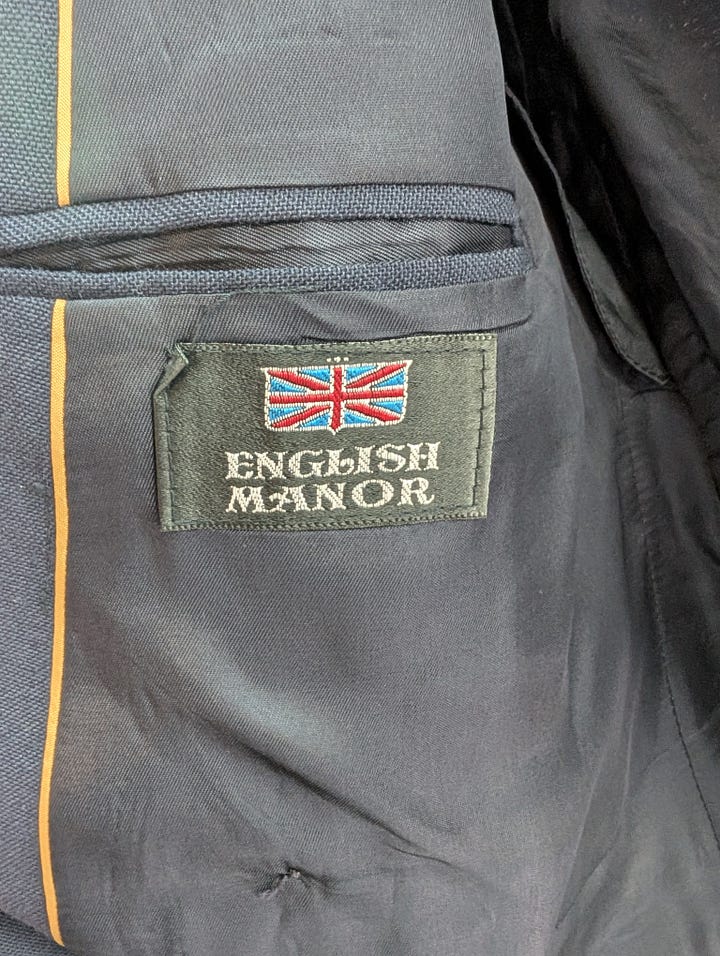
Gabardine - A vintage material with a long history serving the British military, gabardine remains a cool and water resistant staple of sport coats. After a man named Thomas Burberry created the Mackintosh Coat out of rubberized cotton which was heavy and non-breathable, he had been searching for an alternative. It wasn’t until he had discovered gabardine that he found a solution. Breathable, lightweight, and incredibly strong it proved the perfect fabric for his new line of water-resistant products. Gabardine was used in the expeditions of the South Pole and trench warfare during the First World War; it became a proven and battle tested material that post-war society had adopted in droves (A Burberrys’ advertisement for British military men about Gabardine is shown below). Gabardine is a twill woven worsted wool fabric that is tightly knitted to make water resistant garments. In spite of being incredibly tight knit for its water resistance, it maintains the breathability and moisture wicking properties of wool making it perfect for the British summer. My father always swore by his 3/2 roll gold button gabardine blazer that instilled in me my love for fabric.
Tropical wool - One of the most confusing labels in menswear is ‘tropical wool,’ a term that is often unclear, as it is used vaguely by different brands. Normally the term is used to convey the use of a lighter weight wool woven in a looser pattern allowing for breathability which lets more air pass through the garment and by extension, you. This is incredibly important in toning down the suffocating heat of the summer without turning down your style. Although it is worth mentioning that tropical wool can sometimes be a false reference to hopsack or basket weave jackets instead of the type of wool. Many brands, especially on the lower end, use the term instead of those listed above to cater to a different audience who might understand the use of the term tropical more so than ‘basket weave’.
Linen and Cotton - The holy grail of summer dressing, the saviors of the warmer months; linen and cotton. Linen is a natural material made from flax that is the basis for much of the summer styling we see today. It provides breathability and light wicking that are unmatched by any other material in fashion. It has been blended and combined with other materials to change the purpose but 100% linen is an incredibly versatile fiber on its own and can be used to create a variety of styles and garments. From multilayering tightly knit fibers to create structure and stiffness for a shirt collar or jacket shoulder, to loose single layered weaves creating an unstructured blazer like I have in the photos. Linen is often used in more fashion forward and European garments as it was first made popular in the west for textile use in Normandy, France. Some have made their way over the Atlantic to American Prep although it is hard to find the selection they have in Europe unless you know where to look. Cotton serves a similar purpose although less common in jackets and commonly knitted in a basket or hopsack weave. It is usually less breathable than linen and tends to take on smells and odor unlike the more odor-resistant linen and wool. Seersucker is the famous cotton summer fabric that shaped Southern Prep and became a staple of Black Ivy in the 1960’s; a fascinating era of history that defined the dapper and brave men that led the Civil Rights Movement.


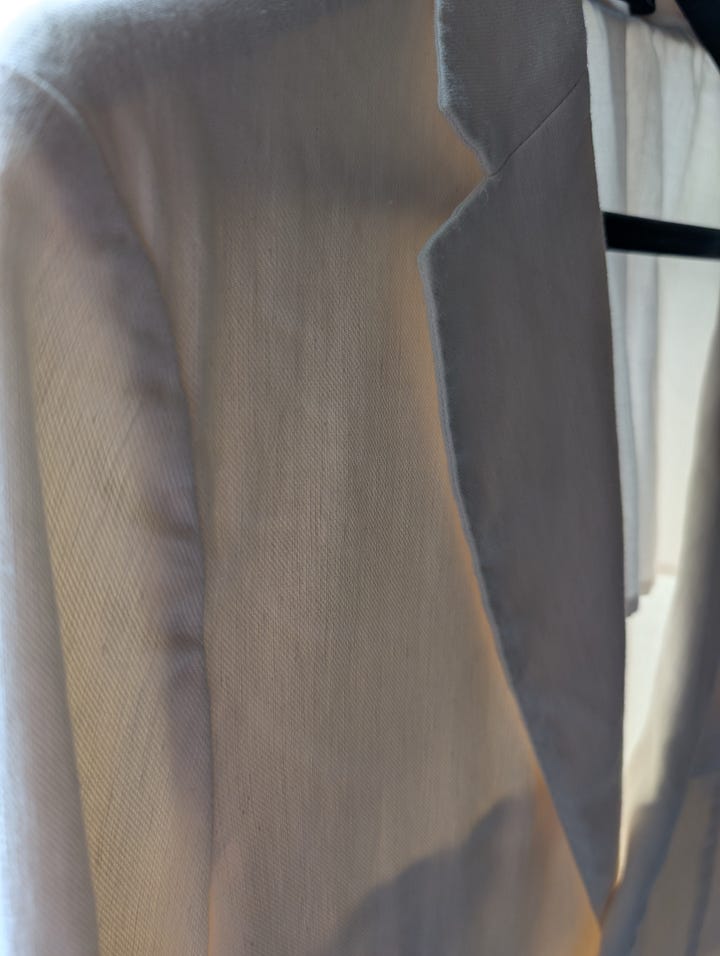
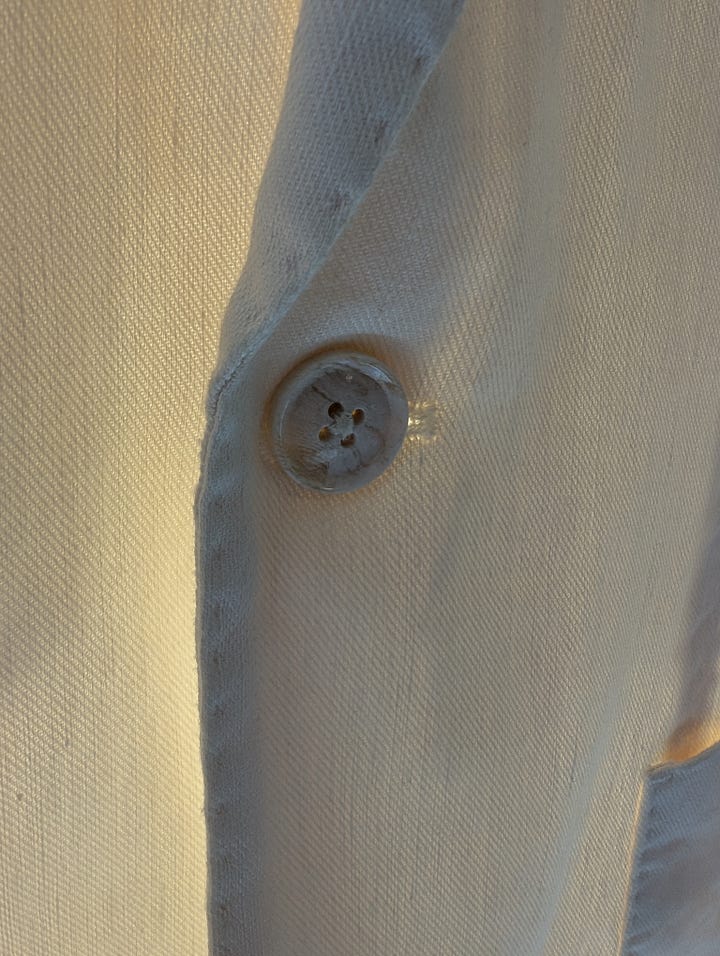
Silk blends - On occasion silk can be made bespoke as a lone fabric but most commonly is blended with other fabrics to add a luxurious and smooth feel to a garment: jackets are no exception. Silk can be found blended most commonly with wool and linen which bring out its different properties. Silk by its nature is an incredibly light and breathable fabric which makes its pairing with linen a match made in heaven, giving it a flowing and wrinkle resistant look which can add a sheen to the jacket creating a more formal appearance. When blended with wool, silk is perhaps the most luxurious material you can have. Providing a soft touch and feel that is unmatched by other fibers. With wool blends the weave is usually made incredibly tight to create a warm jacket. Even though silk is considered a strong fiber, when in a fabric it is hard to maintain its durability, proving hard to treat when washing or dry-cleaning and it does not hold dye as well as other materials which can lead to uneven fading over time. While luxurious you should not cheap out when it comes to silk, but if you are ready to pay there is nothing else like it.
Cashmere - Cashmere’s name comes from the region where it originates: Kashmir. In recent years this area and the Kashmiri people have been the victims of geopolitical conflicts but the wool that comes from the region is incredibly special. While now being produced throughout the world the highest quality wool still comes from the region. The cashmere and pashmina goats are known to produce a soft and luxurious undercoat which is where the wool comes from. It is defined by its thin and hygroscopic fibers that are excellent at wicking moisture, although when crafted into a jacket it is used for its signature texture. Cashmere is a status symbol and provides similar advantages to a wool sport coat although arguments can be made as to whether a cashmere jacket is a necessity in a man’s wardrobe. A friend’s slim and stylish cashmere jacket is shown in the photos.
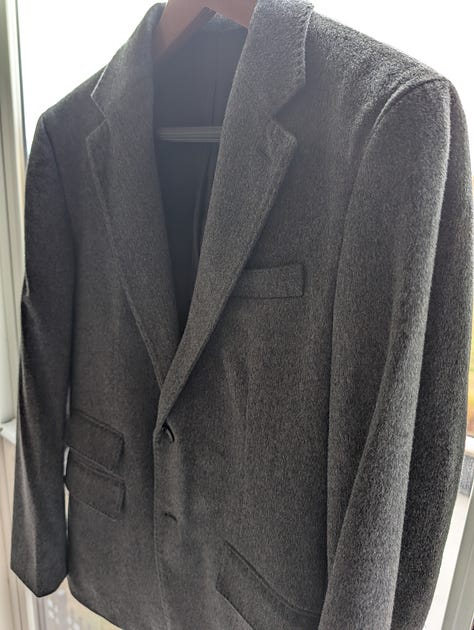
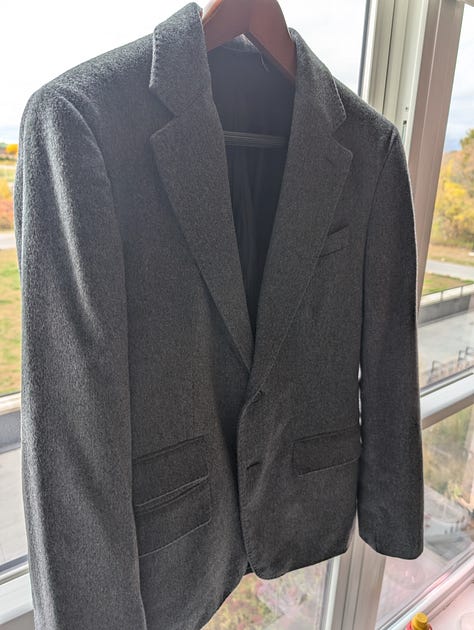
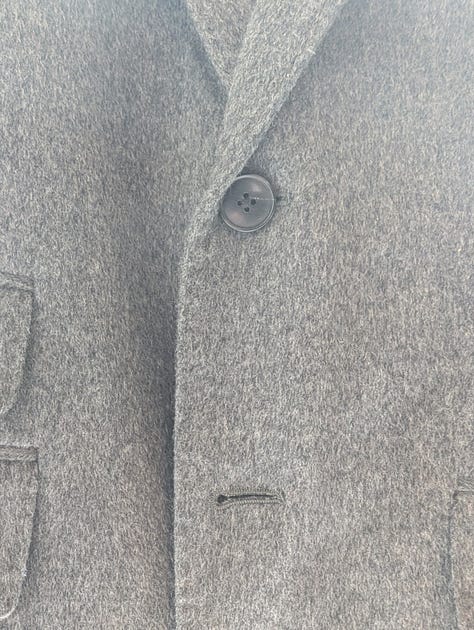
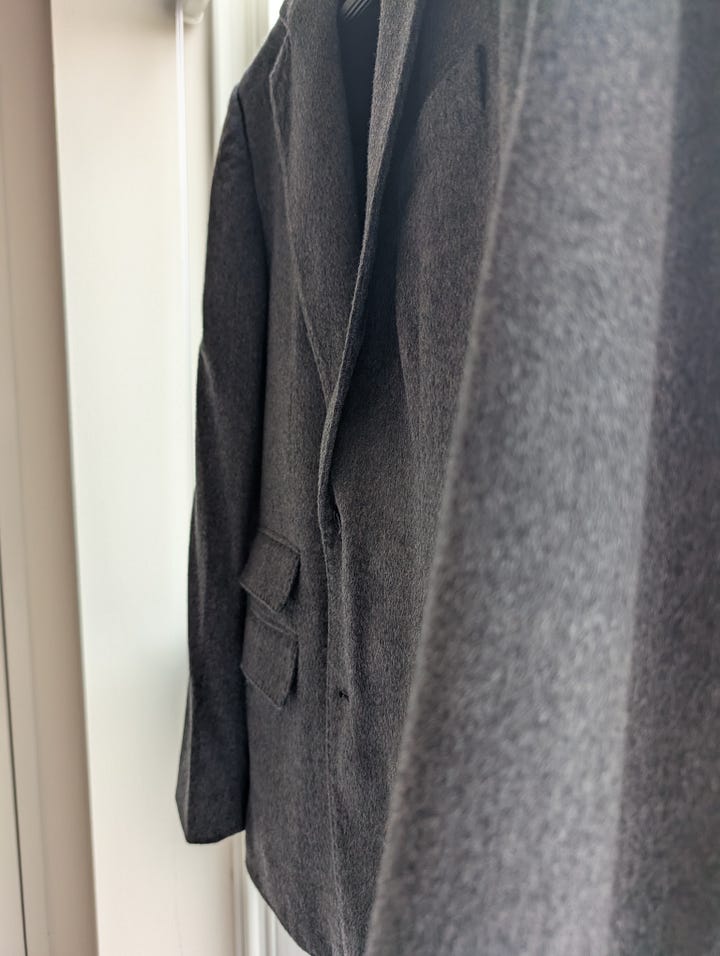
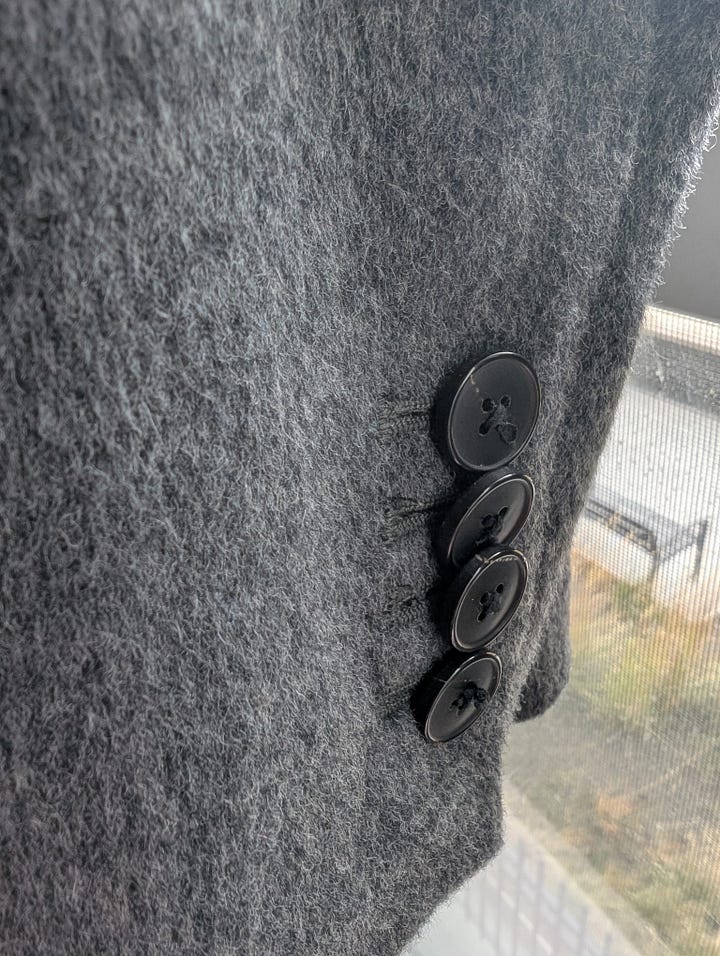
Synthetic Fibers - As is a common sentiment for me, synthetic fibers are a problem in menswear but that does not mean we can dismiss them. In many cases small amounts of synthetic fibers, while deteriorating the durability of garments, can add stretch that help elderly men with their movement in formalwear, so we can keep dressing well even into our later years. The other advantage is cost; for children who continuously grow out of clothing it may not make sense to spend the money on a wool blazer, synthetics are a perfectly reasonable way to make sure you don’t break the bank. Buying secondhand isn’t always an option, as finding the right size and condition can be a challenge. It is perfectly acceptable to make sure your little one still looks good on a budget.
A Matter of Style: Variations and Details
While the fabric of a sport coat is immensely important, style and fit come before all. Not just for sport coats, but for every piece of clothing you’ll ever own. As mentioned in the opening paragraph, the sport coat has changed wildly over its lifetime in terms of style, fit, fabric, and social connotation. In tailoring as in life, the smallest details make the difference.
The Norfolk jacket originally fit more like a Barbour Beaufort with a belted waist, but we know them now to be an entirely different garment. The first big change came post-World War I in the 1920s, where you’d see them cut much more like suit jackets of the time: high buttoning points, cut closer to the body, and with no shirt cuff showing. Fast forward to the 40s, and men are still wearing sport coats cut much like the suits of the time: high armholes and padded (though not as much) shoulders. You do see in the 40s, though, many more iterations of button types, stitching options, and a sport coat that we would now likely refer to as a safari-style jacket. Moving into the 60s, you’ll see what many preps consider the best iterations of the sport coat; things like striped boating blazers, madras, and fuzzy tweeds in the signature 60s cut: slim lapels, cut closer to the body, 3 or 3/2 roll buttons, and a healthy amount of shirt cuff showing. The 1960s cut took many cues from the cut of the 1920s, and subsequently became the vogue cut of the 2010s, as many of you will remember.
Into the 1970s, an odd time for all clothes, the sport coat exploded in popularity as men moved away from suits as daily wear. The rise of countercultures and a distrust in authority that encouraged the conformity of the suit were a few reasons among many. These movements picked up steam in the 60s in metropolitan areas, but came to have mass appeal in the 70s, thus more and more people were wearing casual clothes in all situations. The introduction of synthetic fibers en masse gave way to all kinds of tailored and casual clothes in bright colors with a flamboyant silhouette that featured large lapels, longer jacket lengths, funky buttons, and even details like lapel and pocket trimming moved into the spotlight. However, many of the early yuppies made their way to those metropolitan areas as the 70s progressed, and the 80s brought in an entirely different level of flamboyance: dropped buttoning points and lapel gorges elongated the male silhouette and made him elegant in a way never seen before stateside. Armani was the champion of the decade, inspiring men to let heavy and beautiful fabrics do the talking for them. The 90s continued to play with the formality of the sport coat, giving rise to a new age in its versatility and societal context. Since then, as clothes become much more democratized and mass produced, a million iterations of sport coats mentioned above can be found at a thousand retailers or on the secondary market. The advantage of this is the ability to find what cut speaks to you: do you intend to look like Sinatra in the 60s, Agnelli in the 80s, or JFK Jr. in the 90s? Your options are unlimited, but understanding how each era of the sport coat was influenced by what came before and influenced what came after will help you make the most informed decision.
The Buyers Guide: Fit, Quality, and the Wardrobe
The Quintessential Piece - As the name of this publication portrays, the classic style of any sport coat is the navy blazer and it should be treated that way. The first sport coat purchase for any man should be a gold buttoned navy blazer. Whether it’s a date with a special person, a regular day at the office, classes in University, or weekend events, it is never a poor choice. Dressed up with trousers or down with chinos you can never go wrong. When buying a navy blazer make sure the gold buttons don’t droop down and are high quality with weight and substance. A problem with heavy and weighty buttons is that they sag when they are worn in, but a quick stop at the tailor can get that tightened up and good as new.
The navy blazer usually leaves a large shirt cuff showing and unlike many other jacket types it only has one style: tailored to you. Buying off the rack is great and sometimes we just find the perfect jacket that works but it is important for the navy blazer to be done right and look like yours, not someone else’s or a mannequin’s at a store. Some jackets like tweed can have bigger shoulders or summer jackets with slimmer tapers but the traditional navy blazer has a specific fit that any tailor should know. Sleek lines match your body type down the side and a small amount of room at the front allowing you to wear a thicker sweater without bulking the jacket.
The 3 Button or 3/2 roll is the traditional but the double breasted blazer is a more formal option to be an addition to, not a replacement. Traditionally, it fits a bit roomier and portrays a bigger character. The double breasted blazer allows some room for creativity, whether you want to mimic the slimmer Italian style of Loro Piana or the bigger and wider style favored by English royals you can pick your own preference. Classic purveyors of this style include Turnbull & Asser, Harvie and Hudson as well as other classic Jermyn Street brands.
Let’s Talk Tweed - Perhaps the most utilitarian jacket of the bunch, the tweed blazer is a classic style of sport coat that every man should consider owning. Much of our audience is based in the northern United States and Europe which drives this heavy emphasis on tweed. As a born and raised New Englander the cold weather always comes too fast every year and tweed is an essential for any well-dressed man, although in the Southern United States tweed may not be necessary. With that information in mind feel free to skip the following and go to the next section but for the people of the cold I will continue.
One name that has been synonymous with tweed coats is Harris Tweed, a staple of quality. If you find a label with Harris Tweed (as shown in the photos above) you are likely in the right place. Harris Tweed tends to be thicker and more structured compared to the other options such as Donegal Tweed. Donegal Tweed is usually lighter and more for the transition seasons than Harris Tweed. Harris Tweed is a label that makes jackets for different brands such as Dunn(Above), Ralph Lauren, Burberry, J Press, J Crew, and many more. eBay is a great place to find a second hand tweed jacket with many flooding the market, as long as you know what you are looking for it shouldn’t take long to find one that with a little bit of tailoring will fit you like bespoke.
For those of you who don’t want to buy second hand the year after year styling of Ralph Lauren’s tweed jackets are excellent and continue to be the face of their fall collections, although many classic Jermyn Street and Italian manufacturers like Hawes and Curtis and Canali continue to make well rounded coats with quality tweed. However, if you are looking for a new Harris Tweed coat it may be worth looking at bespoke as an option. New jackets in many cases are not worth the price tag over vintage second hand coats, and the big jump in quality will come from bespoke tailoring from a person you trust, an experience like no other.
What’s Next? - Let’s say you already have a navy blazer that works for you and you have a tweed jacket you love or don’t feel the need for one, what should you look to buy? After the basics are covered you can explore your own style, your own niche within the menswear sphere. Want a linen coat? Make sure the material is structured and well built. Want a seersucker blazer? Check to see if it’s made by a name brand like Haspel, or look for the rough and smooth bi-textural finish that is signature of the material. Want to find a double breasted blazer like the one you saw on a fashionable Italian man during your vacation? Have at it. This section will contain everything you need to know when buying a sport coat, no matter the fit or style.
How Can You Find Quality? - Starting with what to look for; begin with the basics. First, check the label to ensure there are no red flags. Materials should always be of 100% natural fibers, preferably the same material throughout the jacket. If it’s wool make sure the label tells you that it is pure; for example, make sure there are measures of quality like a Woolmark logo as seen on these trousers from Charles Tyrwhitt (Below, left), or the type or origin of the wool like on this black buttoned worsted wool blazer from J. Crew (Below, right).
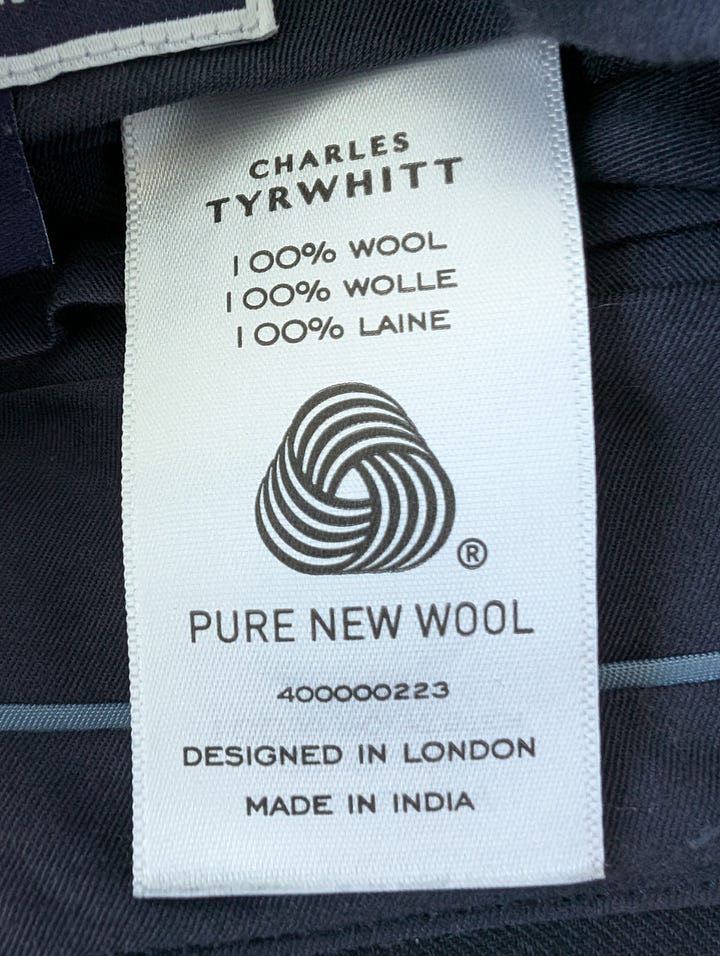
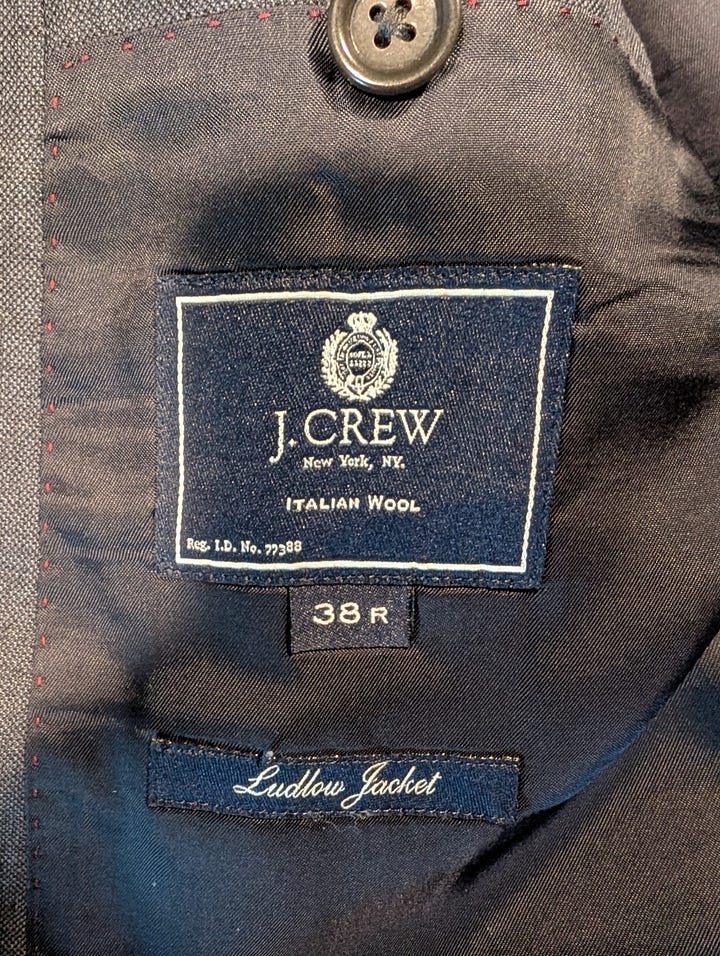
Functioning surgeon’s cuffs, while being a bit of a misleading sign today, still does convey a certain standard of quality, especially for older jackets. Even though many modern brands started to put in the effort of making them, even for their cheaper garments to falsely convey quality. This is when the sleeve buttons can be unbuttoned and have proper holes, although there are also plenty of quality coats without them so take it as a supplemental, and not the only mark.
The lining of a coat is incredibly important unless of course it is an unlined jacket like many linen and seersucker ones. Bemberg or cupro is a breathable rayon (cotton washed in a copper-ammonia solution that creates silk-like texture) which is regarded as the main quality jacket lining material, unless they use real silk which comes with many disadvantages as well as advantages, preventing you from using certain methods of care. The alternatives like polyester signal a cheap construction and it will certainly be sweaty.
A tip I recently learned from my tailor is checking if the jacket is canvassed, by pinching material around the collar inwards on itself you should be able to feel a layer of material on the inside, if the material is floating around the collar without being held in place then you can bring it to a tailor to add an extra stitch. If it is not canvassed it is most likely fused (glued) to itself which is a huge problem as the glue can bubble over time creating actual troughs and puffs in your jacket. (A great detailed writeup and video from The Gentleman’s Gazette is linked if you want to learn more.)
Something that is hard to find now but used to be a relevant sign of quality is the button material. I personally have a difficult time telling plastic from genuine wood buttons sometimes although plastics are used in most jackets today from quality to cheap ones. In my opinion just make sure they feel sturdy and are well stitched, they shouldn’t feel like toys.
If you are buying a jacket second hand make sure to ask the seller about the history of the garment, make sure it doesn’t come from a smoking household as the smells can stay within the jacket for a long time. When buying in person making a checklist is important, for example start with the amount of sleeve cuff. If it is too low you can get it brought up at the tailor for relatively inexpensive although letting out the sleeve is more tricky especially if there is not sufficient hem left (Styling covered below). If you are unsure, flip the cuff of the jacket inside out and feel around with your fingers pressed together on either side to pinpoint where the excess material ends, subtract a bit from that length and see if that would be enough material to get the correct length. Adding material is always more difficult than subtracting it. Generally you want a fit that is too big than too small as you have more room for a skilled tailor to make adjustments.
How to Find the Right Fit - If you are a lucky man and shopping off the rack here are some tips on fit that tailors look for when helping a gentleman that you can use to make your own judgments. One of the most important parts of styling a coat is where the shoulders land, generally in a traditionally styled coat like a blazer the seam should end exactly where your shoulder does, tapering off with your arm although there can be exceptions to the rule for bulkier coats where you want to wear thicker clothing underneath like a large sweater.
In terms of length at the torso, the jacket should fully cover the seat of your trousers. A good rule of thumb is that the hem should end around the knuckle of your thumb when your arms are relaxed at your sides (if you have long arms like me then adjust accordingly). When buttoning the jacket you should feel no tugs or pulls at the shoulders or torso and an overall comfortably snug fit, although personally I always err on the loose side as we never know how we might feel after a delicious meal or large indulgence in dessert.
For the length of the cuff of a jacket there are a few options we have, long full cuffs like we see on full double breasted coats, slightly raised cuffs like you would have on a navy blazer, or sticking with the traditional wrist bone rule which should show about a half-to a quarter inch of sleeve (~1cm). Gold buttoned blazers tend to be styled closer to the top of the wrist bone with regular worsted coats of similar design let out to the apex of the wrist bone or bottom. Making sure you find a style that works for you is important, and nothing is set in stone as everyone has different body types, shapes, and sizes so feel free to work with a tailor or clothier to find what works for you.
In conclusion there are a plethora of jackets to choose from, and beyond the basics it is your world to explore. With everything we covered in this guide it should provide you with everything you need to know about sport coats from styling, to a bit of history, to how to buy one with confidence. We hope you enjoyed and look forward to hearing feedback that we can apply to our future articles. Theo and Jack collaborated on this piece with help from our editor James. Jack provided his expertise on styling and history while Theo provided much of the information about materials and remarks on quality.





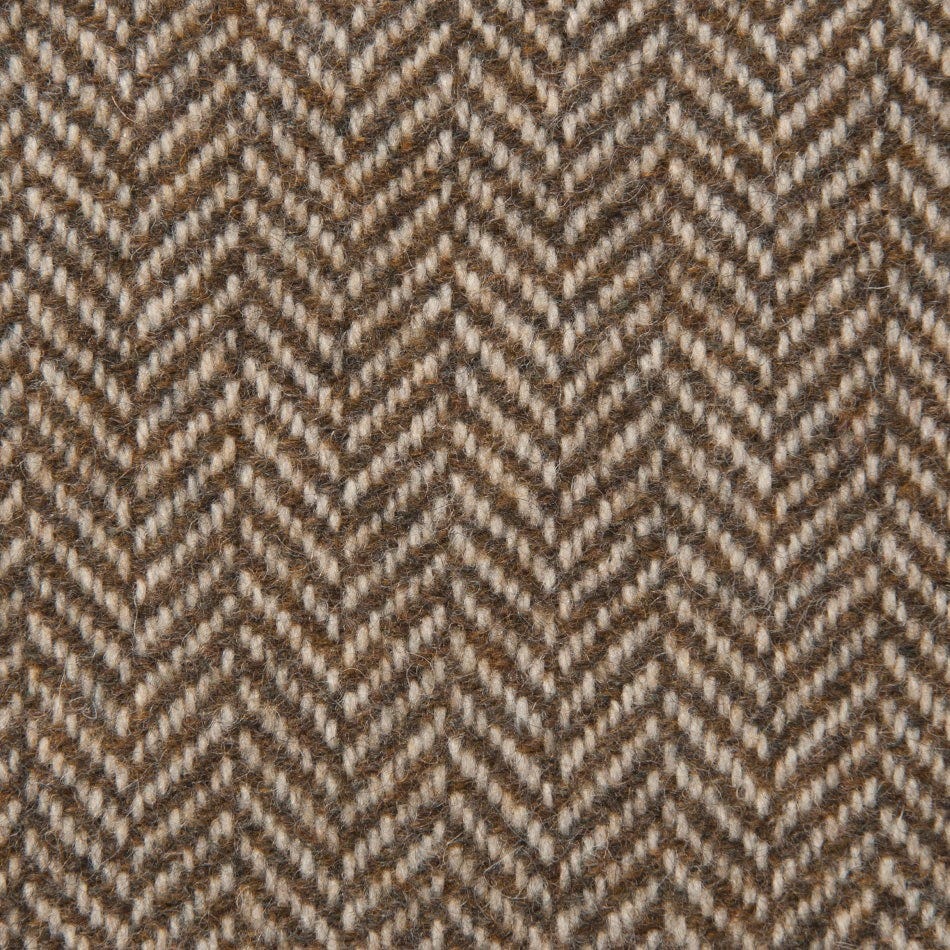

Are there any good places to buy sport coats nowadays that don't cost more than $300?